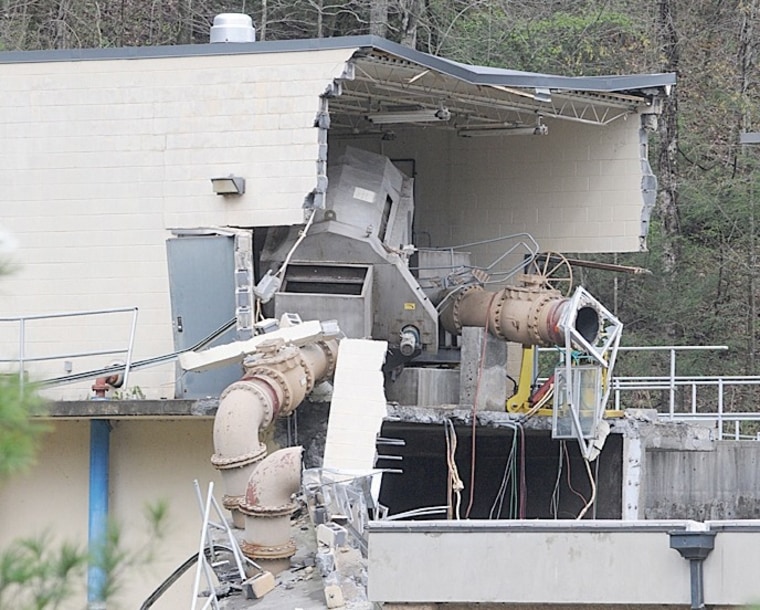A holding tank at a sewage treatment plant in a Smoky Mountains tourist town gave way early Tuesday, killing two workers and sending sewage into a small river.
Crews searched throughout the day before finding the two bodies under rubble at the plant near the Little Pigeon River.
Gatlinburg's fire chief identified the victims as 53-year-old John Eslinger and 44-year-old Don Storey.
Gatlinburg's utilities director said the plant should be repaired soon but he could not say when.
For now, wastewater is being discharged directly into the river.
The spill into the west prong of the Little Pigeon River is a mix of storm and sewage water without solid waste, said Tisha Calabrese-Benton, a spokeswoman for the Tennessee Department of Environment and Conservation.
She said the failure occurred in an equalization basin, a large tank that is used during times of heavy rain to regulate the amount of water going into the treatment plant.
"Right now, the plant is bypassing, which means sewage is being discharged directly into the river," Calabrese-Benton said Tuesday.
The size of the spill had not been determined but officials with the Tennessee Emergency Management Agency estimated it was between 1.5 and 3.2 million gallons.
The Mountain Press newspaper reported that the basin is 70 feet wide, 40 feet tall and has reinforced concrete walls that are 12 inches thick. Photos show a blown-out section of the structure.
The cause of the breakdown was still under investigation, and Calabrese-Benton said she didn't know if it was related to heavy rain. Greg Cole, a National Weather Service spokesman in Morristown, Tenn., said the nearby Great Smoky Mountains National Park headquarters recorded more than 2.62 inches fell in the 24 hours before the failure Tuesday morning.
The river is normally small enough to wade across but rises rapidly and moves swiftly after a heavy rain. It originates in the park and flows north from Gatlinburg, the main park entrance, to Pigeon Forge. Both cities are top destinations for tourists visiting the Great Smoky Mountains National Park.
"It's usually a pretty little mountain stream," park spokesman Bob Miller told the Associated Press by phone. He said the water looked the same above and below the spill site, "the color of coffee with cream."
The National Park Service has personnel on the scene because the sewage flowed into the river, which is on park land and runs between the lanes of U.S. 441, known as The Spur.
"The sewage flowed under (the road) and straight into the Little Pigeon," Miller said.
The cause of the breach hasn't yet been determined, state officials said.
Calabrese-Benton said her department has been contacting communities downstream of the spill, which includes Pigeon Forge, to avoid contact with the river. She said where the spill occurred had previously been under an advisory for bacteria in the water so signs near the river were already in place.
"Obviously, we are not going to want people to have contact with the water until we know what's going on, until we can sample and determine what cleanup is needed," Calabrese-Benton said.
Eric Brackins, assistant city manager for the city of Pigeon Forge, said the city draws its municipal water supply from Douglas Lake and the French Broad River and the supply there is not directly affected.
Calabrese-Benton said the spill is not close to the intake of drinking water for downstream communities and Gatlinburg gets its water upstream from the spill.
